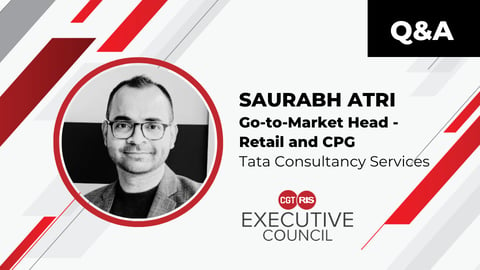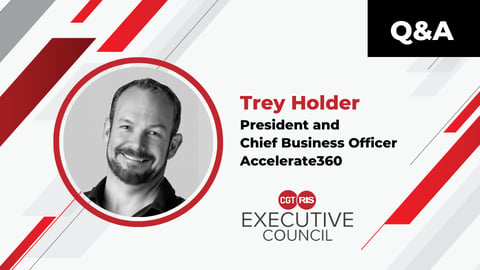Preparing for the Future of IT: Trends and Takeaways From Infosys’ Parag Jain
Parag Jain has an intimate knowledge of the inner workings of IT. Having worked in the worlds of CPG and retail as a tech expert for over 25 years, Jain — Infosys’ SVP and head of sales within the consumer, retail and logistics department — has his finger on the pulse of upcoming IT innovation, digital transformation, and retail and CPG tech shifts.
As a CGT/RIS Executive Council member, Jain uncovers some of the most standout trends in the IT evolution, identifying the industry’s state of readiness, the opportunities that still exist (and where leadership should invest additional resources), and other takeaways executives should have on their radar.
CGT: You have a deep background in IT and technology services. What are some of the biggest shifts you have witnessed when it comes to the needs of retailers and consumer goods companies?
The mega trends of the last 20 years were digitization (due to the advent of the smartphone revolution), globalization (due to the integration of China into the World Trade Organization in 2001), and the cheap capital (due to the ultra-loose economic policy adopted by central banks post the great financial crisis of 2008).
EC MEMBER SHARES
How long have you been with Infosys?
I just completed an extremely rewarding and fulfilling five years with Infosys.
What’s the best piece of advice you have ever received?
a) Never waste a good crisis, b) it is not what you can do, but what you can enable others to do, and c) great success is built on many failures.
What are the three things you’d bring if you were stuck on a desert island?
My yoga studio, pictures of my family, and the Bhagwad Geeta.
What do you wish you knew how to do?
Flying and skiing.
The established world order has been upended and changed dramatically in the last three years because of the pandemic, the war in Ukraine, and accelerating climate change.
In my opinion, the key trends to watch that will define the coming decade are decarbonization (to reverse the effects of climate change), decoupling with China (to de-risk the tightly integrated supply chains), and dispersion (leverage smart collaboration, 5G, and digital technologies to disperse the centers of excellence to the periphery and underserved communities).
All of these have profound implications on retail and consumer goods companies — and the end consumers they serve. The key shifts that are already happening for retail and CPG companies are:
Conscious Consumers: Conscious on price, affordability, ethical sourcing, ESG
Frictionless Experience: Removing any friction in the buying process whether it is frictionless delivery, frictionless checkout, frictionless returns, frictionless try-on, cardless payment, or driverless delivery
Everywhere Commerce: Today’s consumers shop and interact with brands in multiple channels and commerce is happening everywhere: stores, web, social media, metaverse, marketplaces
Personalization: Tailored and curated to a consumer’s individual needs, preferences, and demographics
Autonomous Supply Chains: Agile, adaptive, and resilient based on real-time data
Algorithmic Retail: Based on data – intent, purchases/returns, products, shipments
CGT: What’s your sense on the industry’s state of readiness for IT investments in 2023?
I am personally very optimistic on the tech spending, as well as the overall health of the retail and CPG industry in 2023 and beyond. Technology is no longer a choice; it is an integral part of the business and, in many cases, it is the business. Consumer-facing businesses need to embrace this reality or risk disintermediation or obsolescence.
Retailers and CPG brands need to focus on the following areas to invest in 2023:
In-Store Transformation: Fueled by tech investments in infrastructure bandwidth, computer vision, and cloud capabilities linked to store systems, expect frictionless in-store capabilities to advance quickly. New stores will be more experiential, agile, and frictionless.
Omnichannel Commerce, Metaverse, AR & VR: To drive everywhere commerce, CGs and retailers must provide frictionless personalized experiences for the digitally savvy, always-on consumer.
Cloud Computing: Retailers are migrating their legacy digital commerce platform to the cloud to take advantage of its agility, versatility, and cost-effectiveness.
Connected Retail: Advances in artificial intelligence, machine learning, and cloud computing will help retailers create a seamless, frictionless online-offline retail experience for the consumer. With edge computing, the self-serving consumer will no longer need the help of store associates/call center agents for any transaction in the consumer journey.
Supply Chain: Companies will be building digital twins to simulate real-world, what-if scenarios to help create agile, adaptive, and resilient supply chains.
CGT: Where do retailers and CGs need the most support right now?
Retailers and CGs need to focus on several areas, including omnichannel commerce, the metaverse, and AR and VR: Gen A is poised to be the largest and most technologically connected demographic in history. Retail and CPG companies need to embrace an agile microservices architecture to shed technology debt and enable them to meet the evolving needs of the always-on digital consumer. This includes breakthroughs in new technologies like the metaverse.
Additionally, tighter integration and improved transparency across channels, including partner channels. This can be done through connected marketplaces that provide a single view of inventory, loyalty, and customer across all channels including partner channels. APIs and plug-ins enable seamless collaboration between partners.
Other key areas:
Micro Segmentation of Consumers and Consumer 360: Deeper understanding of the consumer to enable hyper-personalization
Smart Stores: To maintain customer loyalty and high profitability by utilizing technologies like robotics, smart shelves, and automated check-outs
Supply Chain Visibility and Inventory Optimization: To enable real-time decision making on order fulfillment and inventory replenishment
CGT: What are some of the most exciting commerce trends that you think fail to get enough attention? What should retailers have on their radar?
Two categories: Influencer-led social commerce, live stream shopping, the metaverse, and marketplaces. And second, AI/ML becoming mainstream and OpenAI/ChatGPT changing every aspect of how companies operate and interact with consumers. Conversational AI will become the default channel of communication with consumers.
CGT: How can consumer goods manufacturers improve their retail partnerships in 2023?
Retailers and CPG companies are inextricably linked to each other. A successful collaborative partnership between CPGs and their retail partners is essential for both industries. Key areas of collaboration include better real-time POS data visibility that provides demand sensing technology for better understanding of customer behavior and purchase trends, and to make a quick decision on production planning and supply chain.
This helps the companies achieve resilience in every stage of the supply chain and execute just-in-time delivery, improve on shelf availability, and avoid costly markdowns. Also, customer 360 and hyper-personalization. Combined data from CPG and retailers helps them to better understand the consumer and tailor their pricing, products, and promotions accordingly.
CGT: What are some of the emerging technologies that you think will bring about the most change in the next 5-10 years?
First, datafication. The sheer volume of data generated globally reached beyond 79 zettabytes in 2021 and is projected to reach 181 zettabytes over the next five years. Companies would need advanced AI/ML and ubiquitous computing for efficient collection and synthetization of data for real-time decision making. Second, advanced technology like AI and ML.
Also, the metaverse and the digital consumer. The advances in augmented reality, virtual reality, extended reality (XR), and digital multiple experiences (DMX) will bring the digital and physical world closer, and an immersive metaverse will become a ubiquitous reality surrounding our existence.
Two more things. Blockchain: Encrypted, distributed database would be the solution for digital information authenticity in an increasingly digitized world. In a future where 500 billion devices are networked and talking to each other, it will be essential that we have a secure method of ensuring traceability and accountability in machine-to-machine communication, and blockchain will provide that solution. Also, connected environments (i.e., IoT) to drive new channels and physical touchpoints to bring a connected shopping experience to customers.








